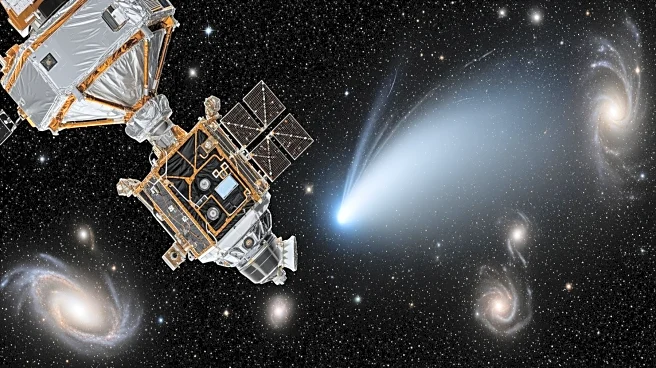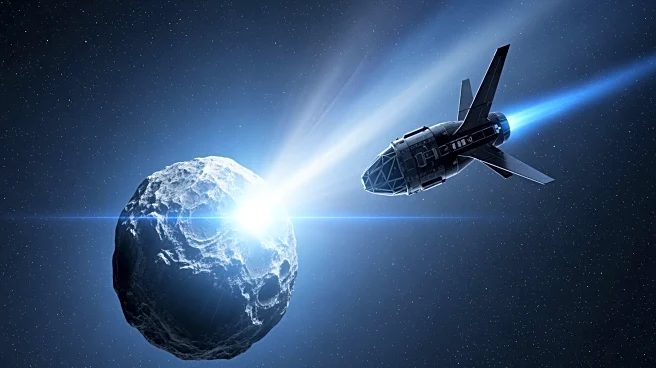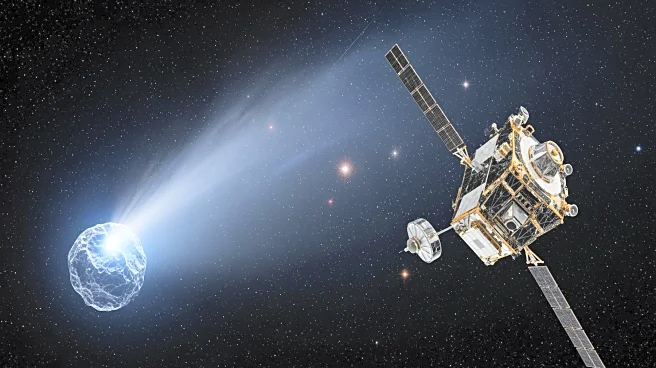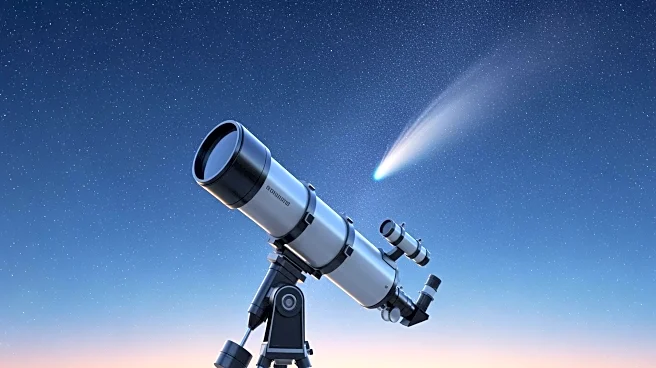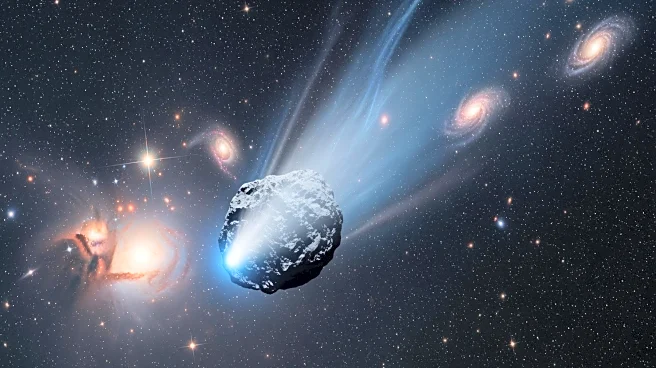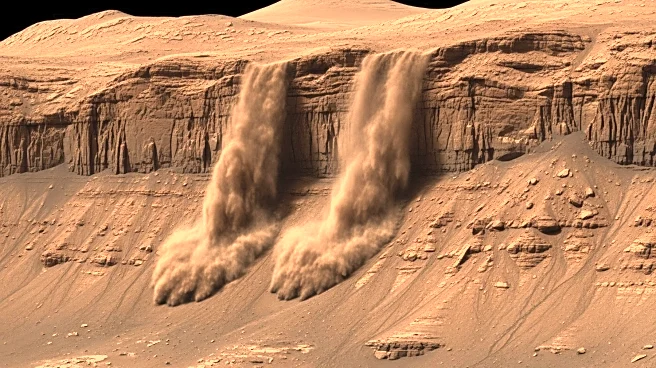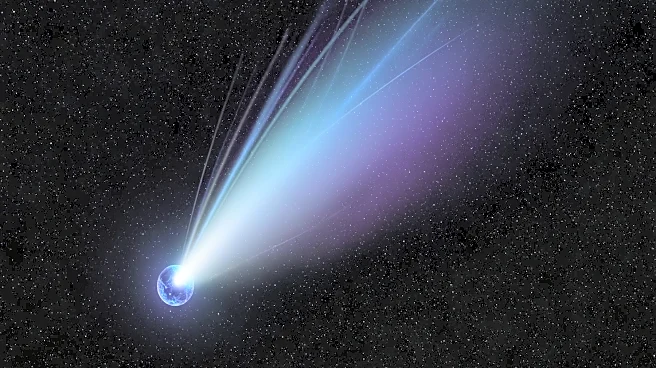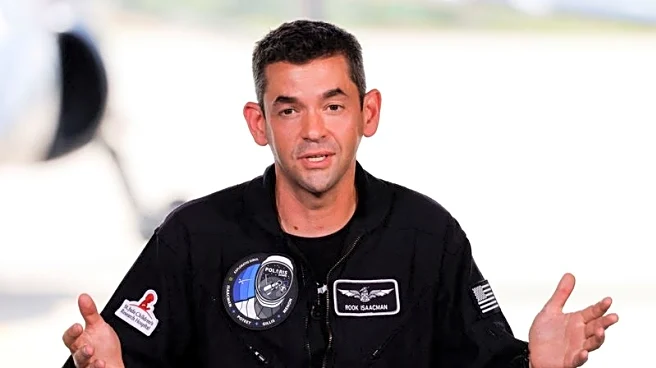What's Happening?
China's Tianwen-1 Mars orbiter has successfully captured new images of the interstellar comet 3I/ATLAS, also known as C/2025 N1, during its close pass near Mars on October 3. The images, taken from approximately
30 million kilometers away, reveal clear cometary features and represent one of the closest probe-based observations of the comet to date. This effort is part of China's broader space exploration initiatives, serving as a technology pathfinder for the upcoming Tianwen-2 mission. The images show the comet's central coma as a fuzzy point moving across the field over a span of 30 seconds, providing valuable scientific data for comparative analysis with other observations, such as those from the European Space Agency's ExoMars Trace Gas Orbiter.
Why It's Important?
The successful imaging of comet 3I/ATLAS by China's Mars orbiter is significant for several reasons. It enhances our understanding of interstellar objects, which are rare and provide unique insights into the composition and behavior of celestial bodies from outside our solar system. The data collected can help scientists compare the comet's activity near perihelion with other observations, potentially revealing new information about its chemical composition and physical characteristics. Additionally, this mission underscores China's growing capabilities in space exploration and its commitment to contributing to global scientific knowledge. The findings could influence future missions and collaborations in the field of astronomy and space exploration.
What's Next?
As the comet continues its journey, further observations are expected from various space agencies, including NASA and ESA, which will continue to monitor its activity and gather data. The post-perihelion observing window has opened, allowing amateur astronomers to track the comet as it transitions into the pre-dawn sky. Spacecraft fly-throughs by ESA's Hera and NASA's Europa Clipper may provide additional insights into the comet's ion tail, depending on solar wind conditions. Continued analysis by the James Webb Space Telescope and Hubble will focus on the comet's nucleus size and volatile ratios, offering deeper understanding of its interstellar journey.
Beyond the Headlines
The observation of comet 3I/ATLAS has sparked public interest and speculation about its origins. However, NASA scientists emphasize that the comet behaves like a natural comet and poses no threat to Earth. The images and data collected reinforce the mainstream scientific view, providing a clearer picture of the comet's characteristics and its interstellar journey. This event highlights the importance of international collaboration in space exploration and the potential for new discoveries that can reshape our understanding of the universe.
